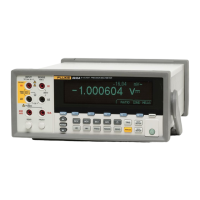8845A/8846A
Programmers Manual
110
then added to the address correspondence table. All communication with a host can then
be done with information from the table.
The operation of ARP also initializes the routing tables in bridges, routers, and gateway
devices on the network. These tables are used to determine the segment of the network to
which a frame should be sent.
TCP/IP Protocol Stack
A protocol stack is a group of interacting programs that implement the various functions
of the network communication protocol. They are usually arranged in a hierarchy of low
to higher level functions, so the collection is called a stack.
Windows NT and later versions of Windows supply a TCP/IP protocol stack. Novell sells
an optional package for NetWare that includes a TCP/IP stack. TCP/IP protocol packages
with included WINSOCK DLLs can also be purchased from a variety of third-party
sources.
The Transmission Control Protocol/Internet Protocol (TCP/IP) has evolved as a
networking protocol that supports communication among diverse computers and devices
(at UC Berkeley there once was a TCP/IP-connected Coke machine). The TCP/IP
protocol can be used to communicate between programs running on many different
computer systems, running under many different operating systems, and even running on
several different physical network types (Ethernet being only one of the many types
supported). The TCP/IP protocol stack is isolated from the underlying network hardware
by a device driver. Applications use TCP/IP resources via one of the several Application
Programming Interfaces (API) that are commonly supported by network software
vendors.
You rarely need to know the details of the TCP/IP protocol. In summary, TCP/IP enables
two computer systems to establish a connection that allows data to be exchanged. Data to
be transmitted is assembled into manageable chunks (packets) by the TCP portion of
TCP/IP. TCP also reconstructs the data at the receiving end by merging the chunks back
together in the correct order. TCP also assures error free communication by use of a
checksum within each packet. Finally, TCP uses the Port ID to specify the specific
application within each system that is sending and receiving the data.
The IP portion of the TCP/IP protocol simply addresses, sends, and receives packets. It
uses the IP address, the subnet mask, and the default gateway information. The IP address
is described in “IP Addresses and Segmented Networks” in this appendix.
The subnet mask is used to separate the network ID from the host ID in an IP address.
For example: if the IP address of a Meter was 198.178.246.10, and a class C network ID
was active, the subnet mask would be 255.255.255.0. When this mask is applied to the
address, the network ID is extracted as 198.178.246 and the host ID as 10.
The default gateway information is only used when your network contains more than one
subnet, or is connected directly to the public Internet. When the network ID of the source
and destination address of a packet are different (hosts on different network segments),
the packet is forwarded to the default gateway for delivery. The default gateway has
knowledge of the network IDs of the other network segments, so it forwards the packet to
other gateways on the network until the packet is delivered to the gateway attached to the
destination segment with the matching network ID. This process is generally referred to
as routing the packet, and devices that do this are also referred to as Routers.
In many modern networks, the use of subnet masking and the default gateway is not
necessary. These networks contain routers and gateways that support the proxy ARP
protocol. In this protocol, the routing path between any two hosts is automatically

